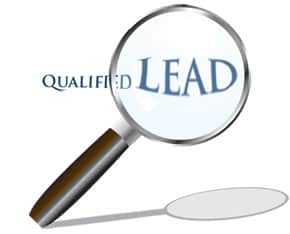Scoring Leads from Marketing Qualified Lead to Sales Qualified Lead
 Effective B2B lead management involves more than simply preventing viable leads from falling off the radar. The effectiveness of a lead management program is really measured by how well it moves suspects from marketing qualified leads (MQL) to sales qualified leads (SQL). The difference between the two statuses can represent tens of thousands of dollars in closed business.
Effective B2B lead management involves more than simply preventing viable leads from falling off the radar. The effectiveness of a lead management program is really measured by how well it moves suspects from marketing qualified leads (MQL) to sales qualified leads (SQL). The difference between the two statuses can represent tens of thousands of dollars in closed business.
A lead scoring system helps to differentiate between leads that are likely to buy now and those that require more nurturing. However, it is most effective if it is constructed properly.
There is often disagreement between sales and marketing departments about what constitutes a “qualified” lead. This makes some sense because the parameters are different among the two departments. A lead scoring system, used as part of a lead management program, provides an opportunity to put values on parameters used by each department.
The lead scoring model should have a threshold – a minimum score – that indicates that a suspect has met enough criteria, the right criteria, to be worthy of a sales engagement. Lead scoring provides a systematic way to transition leads from marketing to sales in a way that gives the sales team confidence that the lead is viable and prepared for a sales engagement.
The question is: at what point is a marketing-qualified lead ready to be transitioned to a sales qualified lead?
For example, take two suspects that have entered your marketing funnel. One is a VP of operations, the other a line supervisor. The VP has visited your website a few times and spent about 15 minutes on your product pages. The supervisor has visited your site fifteen times, downloaded two white papers and several fact sheets, and attended a recent webinar.
Which lead is considered a better sales qualified lead?
In many industries, a VP is a more sales-ready lead because of the likelihood that he has buying authority. However, there are companies that allow purchases by supervisory staff. The greater level of activity by the line supervisor might indicate better timing, but does she have buying authority? Which parameter means more?
This is where applying weight to scoring parameters is important for lead scoring to be effective. Some activities and/or attributes provide greater impact on sales-readiness than others, but which ones matter more could be night and day from one company to another. Examining which behaviors have led to sales in the past is a good way determine weights for certain qualities and behaviors. For example, if the evidence shows that your product sells well after being noticed by subordinates who influence the C-suite after conducting research through white papers, then recent white paper download activity, when combined with the subordinate’s title, should be weighted more heavily than a C-level executive who visited the website a couple of times.
According to marketing experts, a 10% increase in lead quality translates to a 40% increase in sales productivity. This should motivate executives to align sales and marketing departments through a lead scoring system, like the one in Lead Liaison’s Briefcase™ lead qualification dashboard.
Lead scoring can help most businesses improve sales conversions and shorten sales cycles. But it’s important to remember that the scoring model you use to move leads from marketing qualified lead to sales qualified lead status is dynamic (newly uncovered evidence affects existing scoring metrics) and comprehensive (incorporates parameters from both departments).
How does your company score its leads? Post a comment here or drop us a line.


